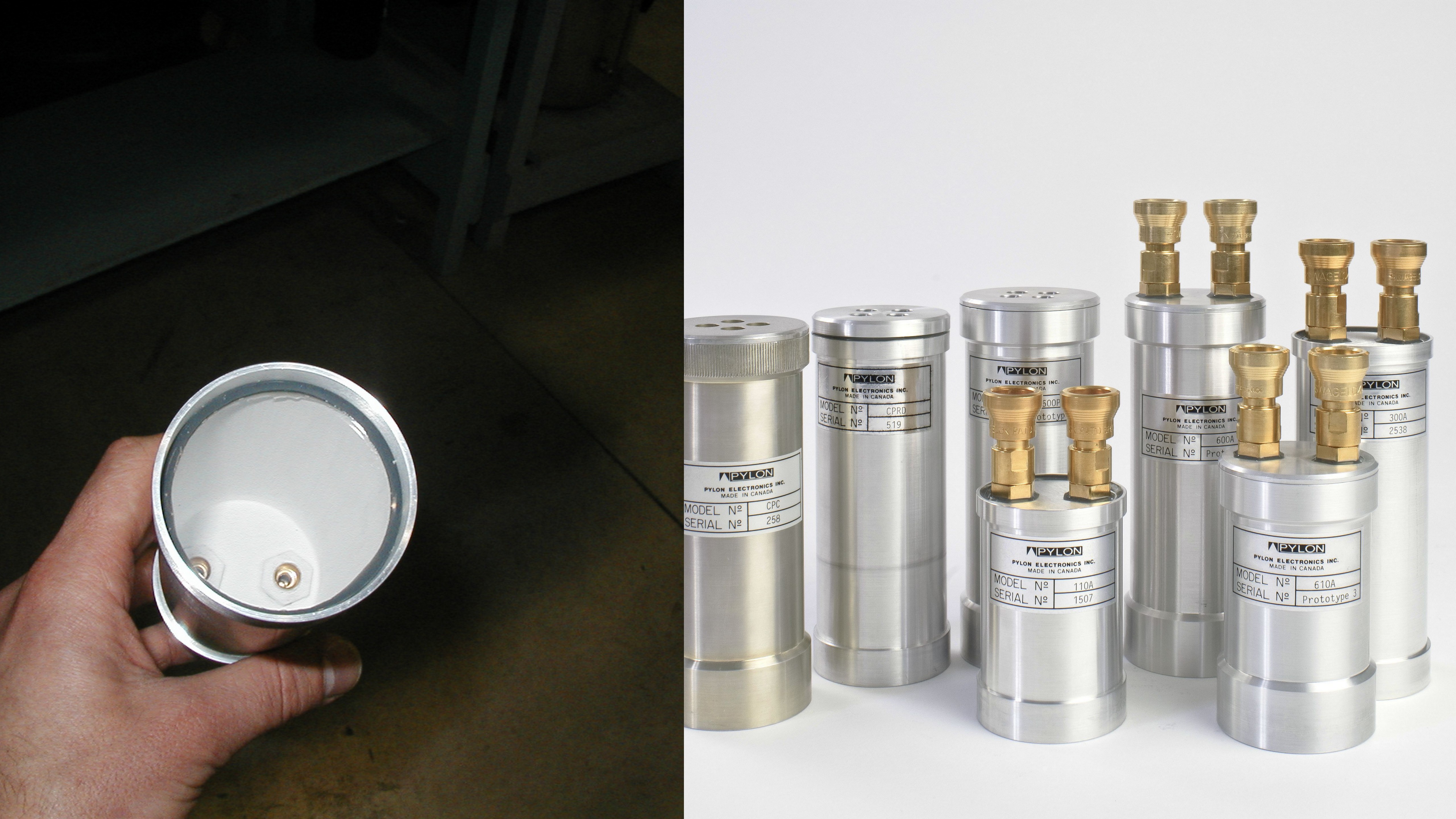Due to the nature of radon measurement, Lucas type scintillation cells are exposed to radioactive radon and radon daughters. This will contaminate the cells resulting in the possibility of compromising future measurements. The measurement life of a cell can be extended by ensuring that the cell is flushed to remove the sample in a timely manner after the sample is measured. Notwithstanding this, it is impossible to remove all of the sample so there will be always be a steady degradation of the cell’s measurement capabilities.
The following lists some of the potential sources of contamination and possible solutions to reduce the impact of these sources.
Short-Lived Radon Daughters:
RaA, RaB, and RaC remain within the cell even after flushing.
To reduce the affect that this daughters have on future measurements, the cell must be left for several hours (preferably overnight) so that most of these short-lived radon daughters will decay away. This means that a cell that is used for a grab sample measurement should only be used for one measurement a day.
Thoron Daughters:
If thoron gas was present in the sample, ThB and ThC will plate out on the cell wall. Thoron daughter activity is regulated by a half-life of 10.6 hours and will remain attached to the cell wall despite being flushed.
It may take more than 24 hours for the background count rate to decay to an acceptable level so if thoron is present, the cell should be left more than 24 hours before being used again for another measurement.
Long-Lived Radon Daughters:
Radon gas eventually decays into Pb-210 and Po-210. Very small amounts of these long-lived isotopes accumulate on the inside walls of the cell from each measurement. This results in an unavoidable and gradual buildup in the background count rate, usually over several years. The amount of buildup is proportional to the number of measurements, the length of time that samples are in the cell, and the activity of the samples.
It is possible to minimize the effects of Pb-210 buildup by flushing the cells with nitrogen, aged air, or filtered air after counting, especially if the sample has a high radon content.
Cells to be used for high and low radon levels can be segregated so that cells which have developed a high background level can be reserved for samples where high radon levels may be expected to occur (such as soil gas measurements or for studies of buildings with known high radon levels). If and when the background level gets too high to take meaningful measurements, the cell should be refurbished or replaced.
Radon Gas Absorption:
Small traces of radon gas can be absorbed by the scintillator binding material and the window. This is usually only noticeable when low level measurements follow very high measurements.
The radon gas can be removed by repeatedly flushing the cell.
Other Long-Lived Radioisotopes:
Contamination from materials such as Ra-226, Am-241, and Th-230 can occur. This is more likely to happen with soil sampling or measurements in industrial locations than in residential measurements.
This type of contamination is usually associated with visible dirt or dust inside the cell and can be prevented by always using an in-line filter. Such contamination can sometimes be removed by flushing the cell with nitrogen, aged air, or filtered air.
Airborne Alpha Particles:
It is recommended that an alpha particle filter be used to prevent airborne alpha particles from entering the cell. By using a filter, it will be ensured that the counts will only be the result of radon gas and its daughters.
Maintenance:
Very little other maintenance is required for the cells. The cells may be cleaned with a soft cloth with a mild cleanser. Do not use isopropyl alcohol to clean the cells. The Swagelok connectors should occasionally be disassembled, cleaned, and reassembled to ensure a leak tight connector.
